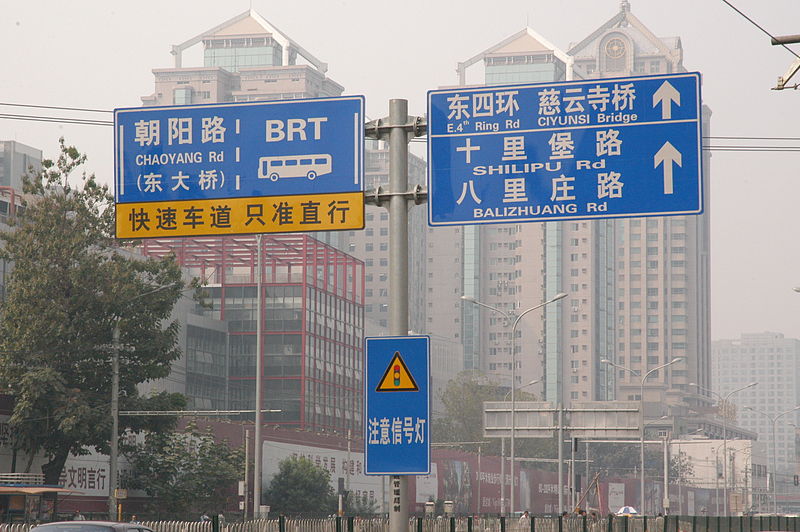Leaders of 28 states convened at a conference on the initiative on this weekend in Beijing. The discussions touched creation of two transport corridors - Silk Road Economic Belt and 21st Century Maritime Silk Road. The plans were first proposed in 2013 and involved construction of a network of roads and railways, ports, pipelines for fuel transportation, power stations on routes connecting China with South-East and Central Asia, the Middle East, Africa and Europe. Also, the new "Silk Road" took center stage in Beijing’s economic diplomacy and became the subject of his propaganda. However, some data suggest that the hype surrounding the initiative may have been exaggerated.
China’s foreign direct investment (FDI) to the countries that are part of the project "One Belt and One Road" fell by 2% in 2016 and another 18% in annual terms since early 2017, according to the Ministry of Commerce. Non-financial FDI in these 53 countries amounted to $ 14.5 billion in 2016 - just 9% of total FDI in China. This volume increased last year by 40% to a record level, which led Chinese regulators to restrict the foreign activity of local companies and the outflow of capital. In addition, the geographical distribution of FDI associated with the initiative poses a question of how much money is spent on the infrastructure. So, most of all investments in 2016 received well-developed Singapore.
"With large investments, especially abroad, the numbers will not necessarily grow every year", says Xiao Yaqing, Chairman of State-owned Assets Supervision and Administration Commission of the State Council. It is necessary to look not at the growth of investments in annual terms, but on development of the projects themselves, he argues. Therefore, Xiao expressed confidence that in the long term, investments in the "Silk Road" countries will grow. According to SASAC, 4776 projects in these countries are involving 47 Chinese state companies.
However, some bankers and representatives of state enterprises privately complain that the government forces them to take part in non-profitable projects. "Many state-owned companies are now fixated on this: the state forces us to do what we do not want", says a recently retired top manager of a major state-owned company.
In addition to FDI, transfrontier bank lending is also an important part of the initiative. Still, the loans issued by China Development Bank (CDB) fell by $ 1 billion to $ 110 billion in 2016, according to information on its website. The share of CDB loans to the "Silk Road" countries in 2014 was a maximum 41%, but then decreased to 33% in 2016. CDB did not respond to a request for comment.
Chinese experts insist that these figures do not reflect the full picture. According to Jia Jinjing from Chongyang Institute for Financial Studies, Renmin University of China, most Chinese FDI passes through other countries before reaching their final destination. This makes the Ministry of Trade’s data an unreliable tool for assessing investment in the countries of the Silk Road. "To assess them, you need to look at how many countries signed a memorandum of understanding to participate in the "One Belt and One Road" initiative and how many heads of state or other important guests and delegations attended the summit. That's the most important thing", says Jia.
source: ft.com
China’s foreign direct investment (FDI) to the countries that are part of the project "One Belt and One Road" fell by 2% in 2016 and another 18% in annual terms since early 2017, according to the Ministry of Commerce. Non-financial FDI in these 53 countries amounted to $ 14.5 billion in 2016 - just 9% of total FDI in China. This volume increased last year by 40% to a record level, which led Chinese regulators to restrict the foreign activity of local companies and the outflow of capital. In addition, the geographical distribution of FDI associated with the initiative poses a question of how much money is spent on the infrastructure. So, most of all investments in 2016 received well-developed Singapore.
"With large investments, especially abroad, the numbers will not necessarily grow every year", says Xiao Yaqing, Chairman of State-owned Assets Supervision and Administration Commission of the State Council. It is necessary to look not at the growth of investments in annual terms, but on development of the projects themselves, he argues. Therefore, Xiao expressed confidence that in the long term, investments in the "Silk Road" countries will grow. According to SASAC, 4776 projects in these countries are involving 47 Chinese state companies.
However, some bankers and representatives of state enterprises privately complain that the government forces them to take part in non-profitable projects. "Many state-owned companies are now fixated on this: the state forces us to do what we do not want", says a recently retired top manager of a major state-owned company.
In addition to FDI, transfrontier bank lending is also an important part of the initiative. Still, the loans issued by China Development Bank (CDB) fell by $ 1 billion to $ 110 billion in 2016, according to information on its website. The share of CDB loans to the "Silk Road" countries in 2014 was a maximum 41%, but then decreased to 33% in 2016. CDB did not respond to a request for comment.
Chinese experts insist that these figures do not reflect the full picture. According to Jia Jinjing from Chongyang Institute for Financial Studies, Renmin University of China, most Chinese FDI passes through other countries before reaching their final destination. This makes the Ministry of Trade’s data an unreliable tool for assessing investment in the countries of the Silk Road. "To assess them, you need to look at how many countries signed a memorandum of understanding to participate in the "One Belt and One Road" initiative and how many heads of state or other important guests and delegations attended the summit. That's the most important thing", says Jia.
source: ft.com





